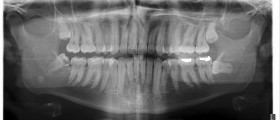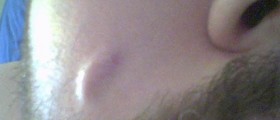
Ganglion cysts are relatively common benign growths affecting the hand or the wrist. They typically develop along the tendons or the joints of the wrist and hand in general e.g. the top or the palm side of the wrist, the base of the fingers on the palm side etc. The cyst is filled with clear fluid or gel and mostly occurs as a consequence of joint/tendon irritation. Mechanical changes in the affected part are also blamed for development of these benign growths. Ganglion cysts affect people of all ages, may increase in size and then reduce as well sometimes even disappearing completely. Also, while some patients only have problem with the aesthetic appeal of the cyst, others additionally complain about pain.
Why do Ganglion Cysts Occur?
Scientist have not managed to clarify why ganglion cysts form in the first place. It seems that the cyst develops once some tissues of the joint break down. Also, it is possible that a flaw in the joint capsule or tendon covering allows the cyst to form and grow further causing certain problems.
The cysts of this type are filled with a thick, sticky and clear material. They may feel spongy or are relatively firm to touch. One may suffer from one large or several smaller cysts. Now, multiple small cysts may appear as one large ganglion cyst. Once the surgery is performed and the cysts removed we can say for sure whether the mass comprises a single or more than one cyst. Fortunately, ganglion cysts never transform into malignant tumors. They account for about half of all soft tissue tumors affecting the hand. In the majority of cases (70%) ganglion cysts occur in people between 20 and 40 years of age. Children may be affected as well although this is a rather rare occurrence.
Clinical Presentation
Typical appearance of the ganglion cyst is in the form of a bump/lump of different size. The cyst, as it has already been mentioned, may be firm or spongy. Its average diameter is 0.4-1.2 inches. It is strongly connected to nearby tissues, hence cannot move when palpated. In some cases tissues around the cyst may swell. The swelling is transient and usually triggered by strain.
Once they form ganglion cysts may grow in size gradually or rapidly and even reduce in size or completely disappear. Recurrence of the cyst is also possible.
While most individuals suffering from ganglion cysts do not experience pain, some actually do complain about discomfort or painful sensation of the affected area. The pain occurs spontaneously or is precipitated by joint motion.
Also, ganglion cysts attached to tendons may trigger weakness in the affected area.
Diagnosing Ganglion Cysts and Treatment Options
The very appearance of the cyst, its location and size makes it quite easy for doctors to diagnose the condition. Apart from physical exam, patients additionally undergo several more tests and exams. One of these is punction of the cyst. By using a syringe doctors draw out fluid from the cyst. The procedure is always performed with the assistance of ultrasound. Obtained fluid should be laboratory and microscopically evaluated. The very ultrasound is most commonly sufficient enough for confirming the presence of the cyst. However, doctors are due to take samples of the cyst's content and exclude potential malignancies and infections. One more imaging method that gives perfect insight in the cyst and may differentiate the cyst from other growths in the area is MRI (magnetic resonance imaging). This exam is rather expensive test kept only for suspicious cases when doctors are not sure whether the cyst is actually a ganglion type of cyst or it is perhaps a tumor of other origin.
Many times cysts that cause no additional problems except for being unsightly may need not to be surgically treated. Only if they continue growing, become painful, interfere with the function of the affected area or cause weakening/tingling/numbness of the affected part of the hand, surgery is indicated.
Surgical excision is rather simple. The cyst is removed via a small incision while patients are under local anesthesia. The surgeon makes a large cut when open surgery is indicated while small incisions are a part of arthroscopic surgery, an advanced surgical technique that allows doctors to insert a tiny camera through an incision and with the assistance of tiny instruments (which are also inserted through small incisions) manipulate with desirable tissues without any need to make large cuts.
After the surgery the joint is splinted for a couple of weeks. The splint keeps the operated area immobile and allows it to heal properly. Splinting should never last long since it may interfere with rehabilitation. Patients whose joint has been immobilized for a long period of time required more time to restore all the joint movement.
Finally, since ganglion cyst are recurrent. one surgery may not be sufficient enough and many patients may need to undergo repeated surgical excision.
















Your thoughts on this
Loading...